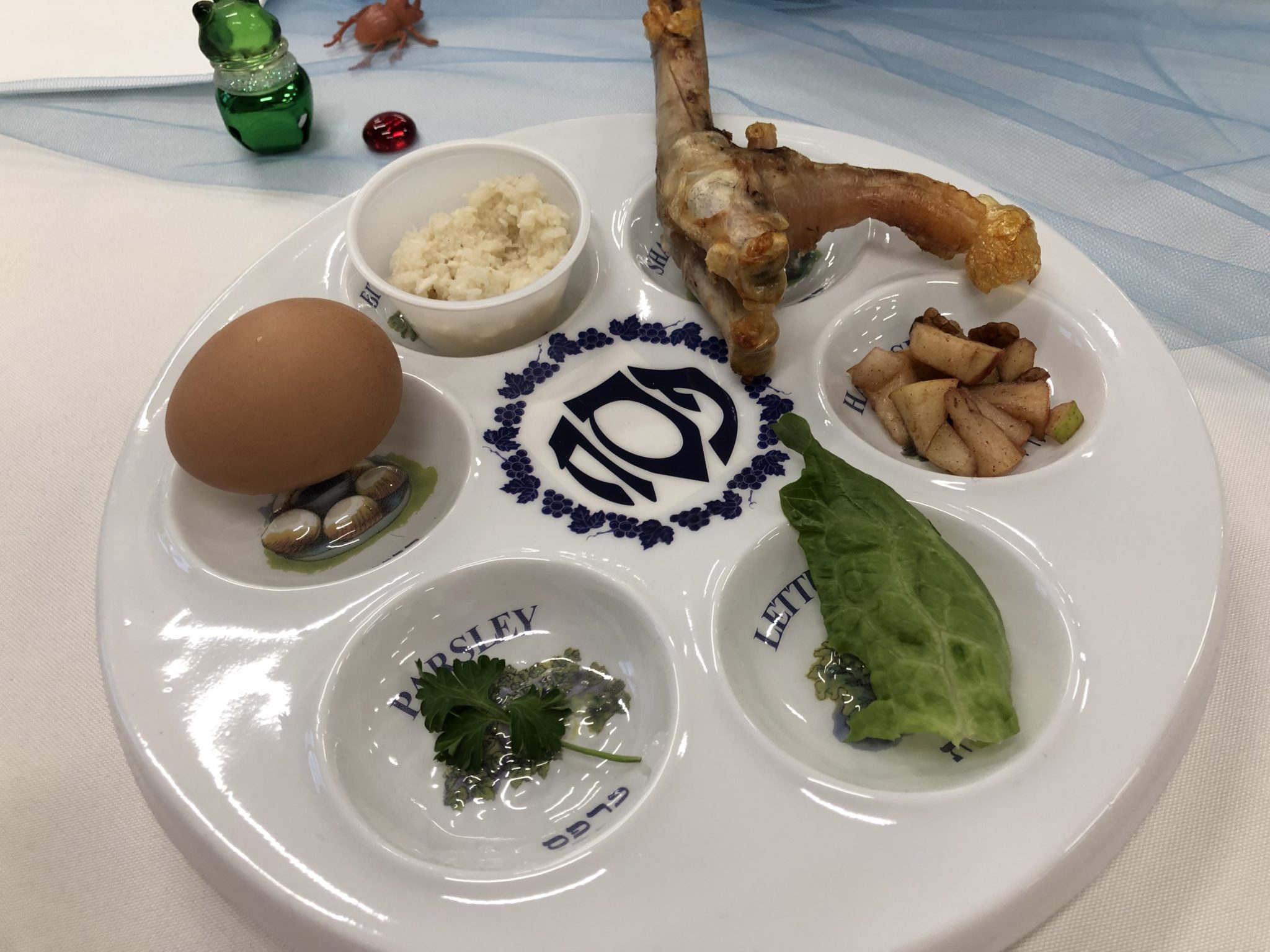D uring Passover, Jews celebrate God leading his people out of slavery in Egypt to freedom. On the first night of the Passover celebration, Jewish families retell the story of the exodus from Egypt through a Seder Supper. During this meal, the foods people eat and the words they say represent significant aspects of the Exodus story. Many Christians find that participating in a Seder supper helps them to connect with the roots of the Lord’s Supper. As a result, Seder suppers have become a popular way for Christians to mark Maundy Thursday.
What does the Jewish Seder supper have to do with the Lord's Supper?
We don’t know exactly when the last supper took place, but the gospel writers tell us that the last supper was around the beginning of Passover. So as Jews preparing for Passover, Jesus and his friends may have been remembering how God’s saving love led them out of Egypt during the last supper.
Jesus chose this special time of remembrance for Jews to begin a new tradition of remembrance for Christians: the Lord’s Supper.
Like the Passover meal, the Lord’s Supper takes place at the table. It is at the table that we are spiritually fed, just as the bread and the cup sustain our physical bodies. And just as the Passover meal reminds Jews of how God’s love delivered them from Egypt, Communion reminds us of how God’s love saves us from our sins through Jesus.
How first-century Jews celebrated Passover
Jesus would have celebrated the start of Passover with a special meal, just as Jews do now. At this meal, Jesus likely would have eaten an animal offered as a sacrifice to God for Passover, unleavened bread, and wine. He might have sung songs to praise God with his friends and family as part of the celebration, too.
Many of the Seder traditions that modern Jews observe were not yet part of Passover celebrations in Jesus’s time. For example, the “Haggadah” book that Jews read to retell the story of Passover dates back to the Middle Ages. But learning about modern-day Jewish Seder traditions can still help us appreciate the meaning and roots of the Communion meal that Jesus instituted.
Related: What Did Jesus Eat?
The modern Jewish Seder supper
During a Passover Seder, Jewish families retell the story of their deliverance from slavery in Egypt. Families read the story from a book called a Haggadah. During the meal, families eat special foods in a particular order to symbolize important parts of the story.
The process is usually led by an elder member in the family, and children also play a special part. A child asks a question, and an adult answers by detailing part of the story of the Israelites’ redemption. Some Seders are more elaborate than others, and the rituals can take more than three hours. The table for a Seder meal features special dishes that have a symbolic role in the story.
Traditional Seder supper foods and what they represent
Zeroah: a lamb’s shankbone symbolizing the ancient Passover sacrifice. Some modern Jews substitute in a chicken’s bone.
Haroset: a sweet dish made from apples, spices and nuts. When the Jewish people taste Haroset, they remember the Israelites used mortar to make bricks in Egypt.
Unleavened bread: When Jews taste the unleavened bread, they are reminded that God’s people left Egypt so quickly that they could not wait for the bread to rise.
Karpas (parsley) dipped in salt water: Dipping a sprig of Karpas in salt water reminds Jews of the tears cried by God’s people when they were in captivity as slaves. The sprig of a green vegetable (typically Parsley) represents spring.
Mar’or: a bitter herb, like horseradish, that reminds the Jewish people of the bitterness of life as a slave.
Beitzah (roasted egg): Tasting a roasted egg reminds the Jews of the sacrifices they offered to God for their sins.
Grape juice: Represents the redemption of the Israelites that made their freedom from slavery possible.
How can Christians engage with the Seder tradition?
It is important to distinguish Christian Seder-inspired traditions from the Jewish Seder. When we borrow bits and pieces of Jewish tradition to make Christian Seder meals, we aren’t experiencing a true Passover Seder. We need to approach the Seder meal with respect for its role in the the Jewish faith.
To best appreciate what the Passover Seder means to the Jewish faith, join a Jewish family for their Seder supper. You can also participate in respectful Christian meals and worship experiences inspired by the Passover Seder meal as a way of reflecting on the meaning of the Lord’s Supper. Here’s a guide for a worship service teaching about the Seder meal from Reformed Worship you might find helpful as you plan.
One way you might learn from the Jewish Seder tradition: Try using the Seder storytelling approach to teach children about Communion. Gather with your family for a feast featuring bread and grape juice and use the Seder supper format to retell the story of the last supper.
A Seder-inspired Maundy Thursday worship idea
From The First Church in Albany, Albany, New York (adapted from the Heidelberg Catechism)
Have a special meal (either as a family or with your church) to retell the story of the last supper Jesus had with his disciples. Here’s a set of questions you could use for the meal commemorating the Lord’s Supper. Have children or a child take turns asking the questions and an elder or adult respond.
- Why is this night different from all other nights?
This is the night that Jesus shared a special meal with his friends. It was the night before he was crucified on the cross. He took bread and gave thanks and then he broke the bread and gave it to them and said, “This is my body given for you.” He took a cup of wine and said, “This is my blood shed for you. Do this in remembrance of me.”
- Are the bread and wine changed into the real body and blood of Christ?
No, the bread of the Lord’s Supper is not changed into the actual body of Christ, but is a reminder and promise of God’s love for us.
- Then why does Jesus call the bread his body and the cup his blood?
He wants to teach us that just as bread and wine feed our physical bodies, his crucified body and shed blood feed us spiritually. Jesus also wants us to know that through these signs of the bread and cup, and through the work of the Holy Spirit, we share in his true body and blood.
- What does it mean to share in Jesus’ body and blood?
It means to accept with a believing heart that his body was offered for us and his blood was shed for us and that he gives us forgiveness and new life. It also means that the Holy Spirit that is in Jesus is also in us, making us more and more like Jesus.
- Can I take bread and grape juice and have the Lord’s Supper by myself?
No, this is a meal Jesus wants us to share together. By eating and drinking together we are reminded that Jesus wants us to love each other and to forgive each other.
- Is this a sad meal?
When we remember how much Jesus suffered for us it makes us feel sad. But we also remember that Jesus rose from the dead and will come again and that makes this a meal of celebration and joy.
- Who should come to the table of the Lord?
All those who have been baptized and believe that Jesus loves them and that he gave himself for them should come to eat the bread and drink from the cup.
Grace Ruiter co-founded Faithward and oversaw its growth from a small blog to a ministry that reaches 100,000-200,000+ people each month. She has been asking too many questions ever since she started talking, and she has no plans of stopping now. Although her curiosity has challenged her faith at times, it's also how her relationship with God has grown to where it is today. You can get in touch with Grace at graceruiterwrites@gmail.com.
Kathy Ruiter
Kathy Ruiter is an experienced Christian educator and curriculum writer. She currently teaches preschool and young fives at Rockford Christian School in Rockford, Michigan.




